SLIP AND FALL ACCIDENT LAWYER IN LOS ANGELES
“DRIVEN TO BE THE BEST SLIP AND FALL ACCIDENT LAWYER IN LOS ANGELES”
FREE CASE
EVALUATION
When people think of some of the most severe injuries, they often find themselves thinking of car accidents and other catastrophic acts of negligence. While this is most often the case, some of the worst injuries can involve slips and falls in various private and public places. In these situations, they are usually more severe because they can involve you falling on your neck, back, or head. It’s important for you to recognize some of the ways in which this type of action can occur and what happens when you need to pursue legal action.
Throughout this page, we’ll answer some of the most commonly asked questions you may have, including:
- Can I sue for a slip and fall and can I sue someone if I fall on their property?
- How long after a slip and fall can I sue?
- Are slip and fall cases hard to prove?
- What is the average settlement for a slip and fall knee and back injury?How much compensation do you get for a finger injury?
- Should I get a slip and fall accident lawyer in Los Angeles?
- How do you prove emotional distress?
- How do you prove negligence in a slip and fall accident?
These are some of the more complex situations because people don’t fully understand their rights and options. However, you can sue for a slip and fall should you fall on someone else’s property under numerous circumstances. If you are a licensee or invitee on someone else’s property, the property owner knew of the potential danger, and did nothing to remedy it, they can be held accountable for any injuries you sustain as a result of the slip and fall. It’s vital to recognize that there is a statute of limitations for all personal injury matters, including slip and falls, permitting you to file a claim within two years. Some special circumstances can change this deadline.
Proving a slip and fall case is dependent on numerous factors, such as the following:
- There was a duty of care that the property owner had to keep patrons on his or her grounds safe from harm.
- There was a breach in that duty of care that the property owner knew about and failed to warn patrons about or remedy.
- There was causation that can show the property owner’s negligence caused you to suffer harm.
- There were injuries that you sustained that caused you to suffer significant losses for your physical and mental damage.
It’s vital to recognize that evidence is crucial in proving your case. Showing that the property owner was negligent can help you pursue compensation you need to cover your expenses associated with the injury. The average settlement of a knee or back injury stemming from a slip and fall injury is dependent on numerous factors that involve how negligent the property owner is, the location of the injury, how severe the injury is, and how it can impact your life. Similarly, the compensation you can receive for a finger injury may depend on your career and the impact that the finger injury has on your ability to earn an income.
After a slip and fall, it’s essential to get a slip and fall accident lawyer in Los Angeles on your side who can help you prove liability and causation. Our slip and accident lawyer in Los Angeles has the full understanding of all California laws and is capable of proving that you deserve to pursue compensation for your injuries. A slip and fall case relies on the property owner’s insurance provider to pay out compensation, but these large companies are not always looking out for your best interests. Getting a slip and fall accident lawyer in Los Angeles helps you to hold the insurance companies to their word to help you receive the favorable outcome you deserve.
A lawyer can also help you understand how emotional damages play a role in your compensation. Emotional distress is covered under the non-economic damages you may pursue in a slip and fall lawsuit. Proving it can be more difficult than proving physical injuries because these damages are dependent on how the injury impacts your life. Emotional damages often consider how your life has been impacted by the injury, such as your quality of life, your ability to do things you did before the injury, and any pain and suffering you endure.
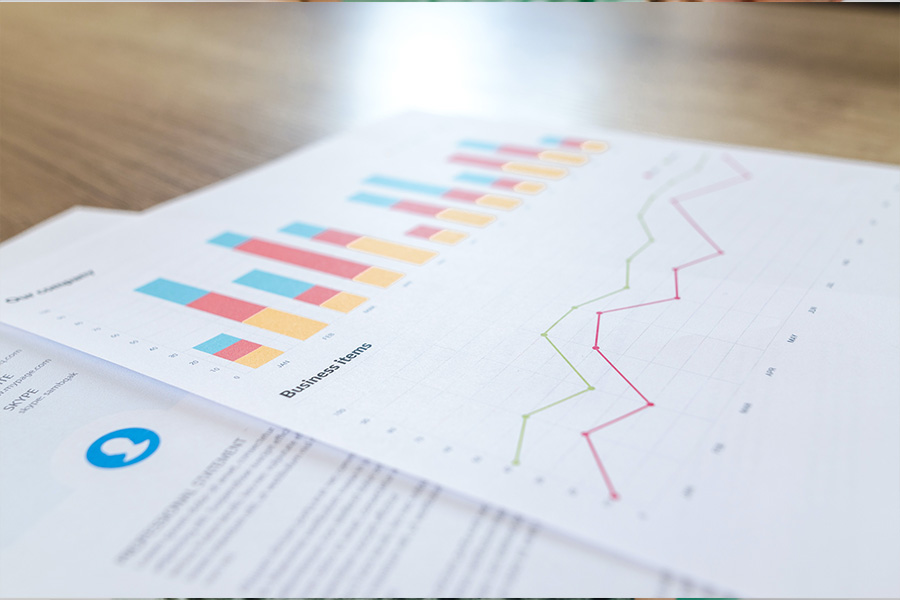
Trip and Fall Statistics
While every slip and fall situation is different and there are plenty of factors to consider when filing a lawsuit, it’s crucial to recognize how severe some of these situations can be. Unfortunately, these situations occur far more often than they should and they can leave a victim enduring long-term pain, such as catastrophic injuries. Here are some of the stats associated with slips, trips, and falls, and the impact they can cause.
Roughly one in every five falls results in some of the most severe injuries such as broken bones or a head injury. These injuries are considered catastrophic because they can lead to a lifetime of pain and suffering, as well as an impact on your ability to work or earn an income.
- Over 800,000 people require hospitalization or emergency room visits each year due to a slip and fall accident. Of these, a large majority involve head injuries and hip fractures, which can impact someone’s ability to walk.
- Of all hip fractures that occur, roughly 95% of them are the result of slips, trips, and fall accidents. These situations can be debilitating moving forward, impacting your abilities to work.
- Most people think that traumatic brain injuries are most prevalent in auto accidents, but a large majority of those that occur are a result of severe falls, such as when someone falls to his or her side.
- In 2015, medical expenses associated with slips, trips, and falls reached more than $50 billion, proving that those who suffer these types of injuries need to pursue compensation for their injuries.
Any of the injuries you sustain as a result of negligence can be difficult to endure. However, slip and fall accidents become complex because most people don’t know what legal rights they have. If you suffer an injury in a trip and fall, you should work quickly to get a lawyer on your side. A slip and fall lawyer in Los Angeles can help you prove liability to show when a property owner should be responsible for your injuries.
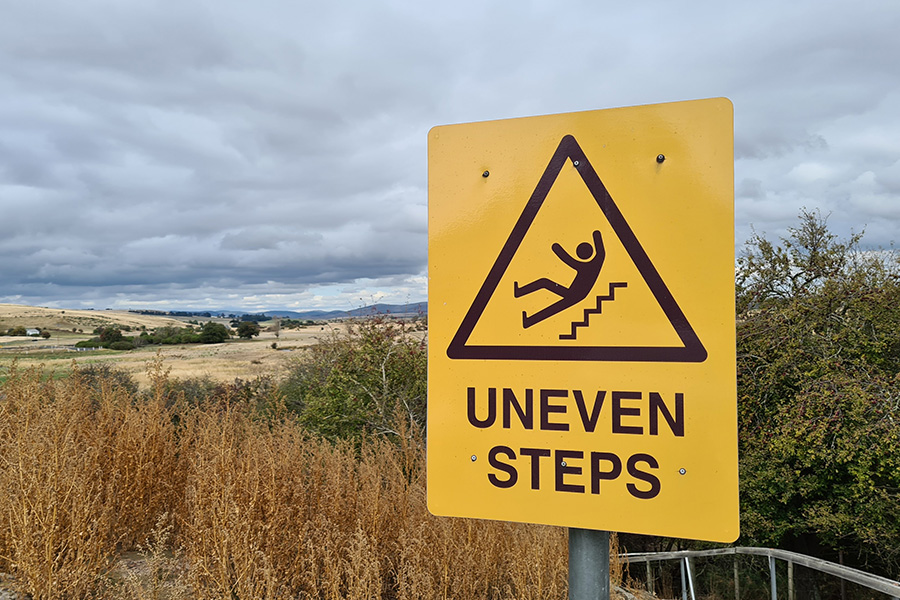
Common Causes of Slip,
Trip, and Fall Accidents
When determining your rights to pursue compensation, a Los Angeles slip, trip, and fall attorney can help you determine what legal actions may be available to you based on causation. If you suffer an injury, you should recognize what some of the most common causes are, who can be responsible for the injury, and what kind of compensation to which you may be entitled.
Our slip and fall accident lawyer explains the most common causes of these negligence-related issues:
Trip on uneven pavement:
Uneven pavement can be dangerous in many areas. Even the smallest lip where uneven pavement exists can catch your foot, causing you to trip. If you don’t catch yourself in time, you can fall face first onto the ground, causing significant injuries to your knees, hips, wrists, and more. If you fall on your side, you can hit your head. No matter if the uneven pavement is on private, public, or government property, it’s someone’s responsibility to properly maintain the grounds and ensure it is safe.
Falls from potholes:
Potholes are not only dangerous to your vehicle and tires, they can be in some of the most inconvenient locations, such as a crosswalk. You can trip on even the smallest pothole, causing you to suffer significant harm. Because potholes can be on private driveways or parking lots, as well as government streets, it’s vital for the entity responsible for these grounds to maintain them properly to avoid harm.
Slip on wet floors:
Wet floors are most common in businesses such as grocery stores. If the grocery store property owner doesn’t take the steps to warn patrons of the danger or clean it up properly, it can cause you to slip and fall on the wet floor. In this situation, the store owner is responsible for the damages you sustain.
Slippery floors:
Slippery floors can arise because of liquids, objects that are slippery such as butter, or any other problems that cause the floor to lose traction. You may suffer some of the most severe injuries because slippery floors can cause you to fall with enough force to damage your tailbone, back, neck, or head.
Slip and fall on ice:
While the Los Angeles area does not get a lot of snow, there are many areas where it gets cold enough after rainfall to create ice on the ground. If this occurs on government or private property, these entities are responsible for covering the ice with salt or other resources to create traction and prevent injuries. A slip and fall on ice can be devastating and cause severe harm.
Proving causation can help you pursue the compensation you need.
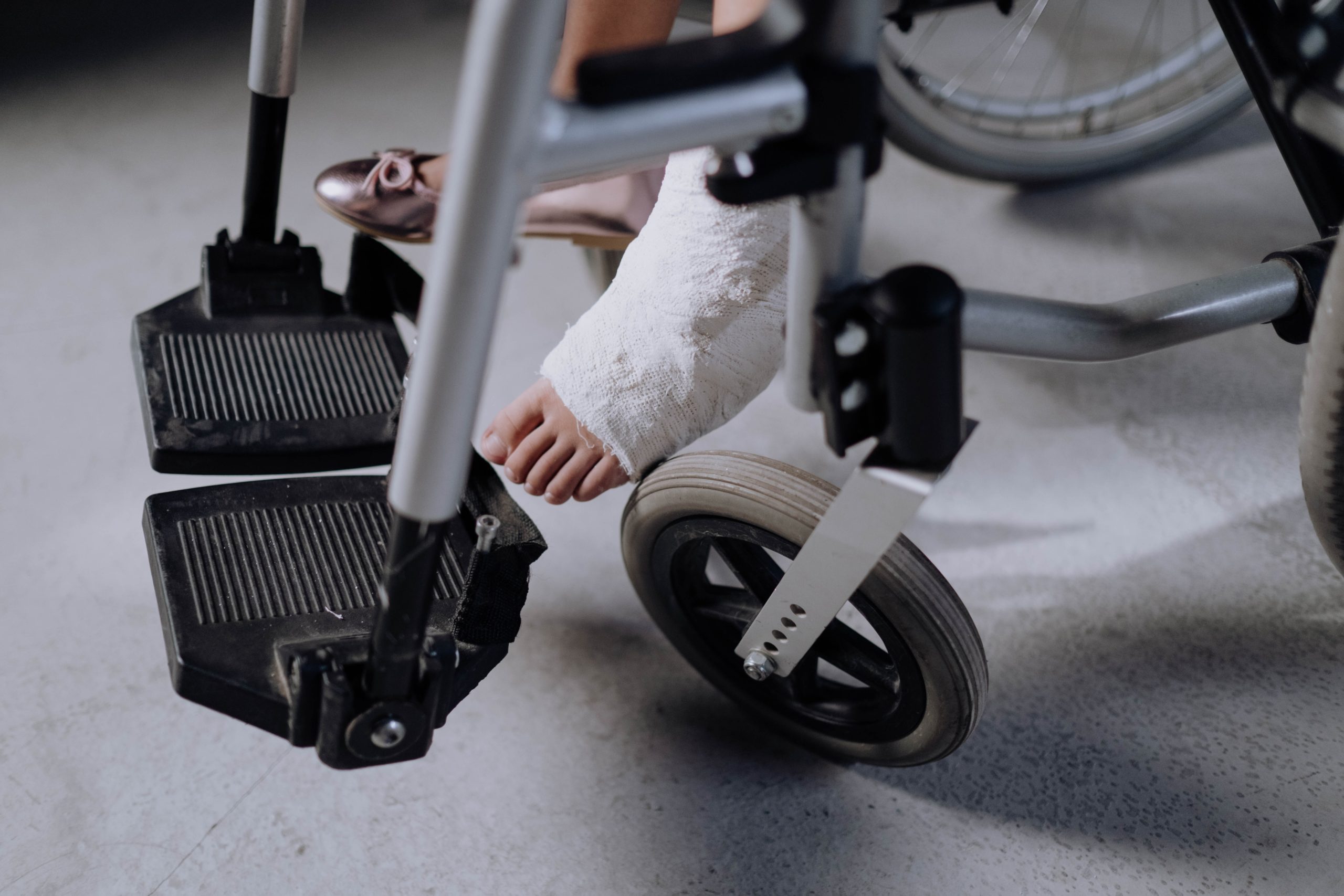
Types of Slip and Fall Injuries
It’s unfortunate, but slip and fall injuries can be some of the most catastrophic you experience. The severity of these injuries are what make some of these cases more complex, because the damages of the injuries can lead to long-term health problems. Some of the most common injuries to arise from slip and falls include the following:
- Broken arm
- Broken leg
- Twisted knee
- Fractured wrist
- Broken finger
- Broken toe
- Cracked skull
- Concussion
- Sprained ankle
- Spine injury
Recognizing the impact of these injuries and how they occur can help to emphasize the need for legal action.
Upper body injuries such arise during slip and falls when you either upend yourself and land on your back, neck, or head, or when you fall forward and try to catch yourself as you’re falling. For instance, if you’re falling forward after tripping on raised carpet, you may instinctively put your hands down to break your fall. This can cause you to suffer a broken finger, wrist, or arm. If you fall backward, you can hit your back and head with enough force to cause a severe spine injury or potentially cause you to suffer a concussion. In some of the worst-case scenarios, spine injuries can become paralysis and brain injuries can lead to a coma.
Lower body injuries can occur when you catch yourself falling by landing on your knees, but they can also arise when you slip on water or ice, and your legs give out causing you to contort yourself in an awkward position. These situations often lead to the sprains, torn muscles or tendons, and more. While they may not seem as severe, these types of injuries will often require you to undergo numerous medical procedures, including surgery.
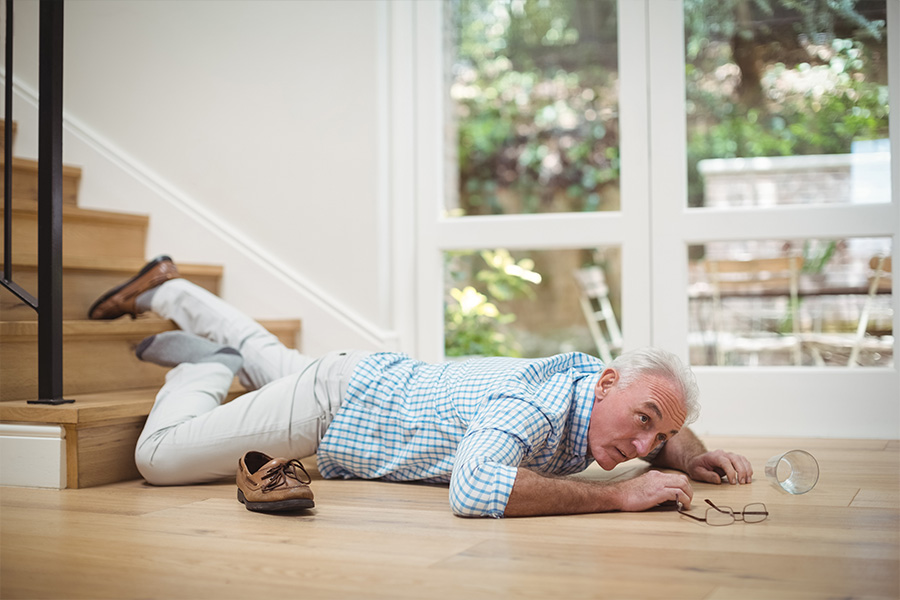
Determining Liability in a Slip and Fall Injury
Determining liability in a slip and fall injury relies on some of the same factors that arise in premises liability claims. Our LA slip and fall lawyers can help you understand what this means in your situation, but generally speaking, these cases rely on property ownership, occupier’s liability, and categorization of the plaintiff. In almost any situation, a trespasser cannot hold a property owner responsible for damages should the trespasser be on the site illegally and without knowledge. The only time a trespasser can seek compensation is if they have no ill intent and the owner is aware of their presence (for example, children who routinely enter a yard to get a lost item without permission).
In order to determine liability, certain factors must be present that allow you to pursue compensation. For instance, you must show that the property owner had a reasonable duty to provide care whenever you are legally on their grounds. Negligence comes into play if the property owner knows of a danger on his or her premises and either doesn’t warn you of the problem or take the time to remedy the situation to keep you safe. Showing that the owner knew of the hazard is the most telling factor of a slip and fall case. For instance, if a shopper reports spilled liquid in a store, the store must work quickly to cover the area with a wet floor sign or pick up the spill. If they don’t and you slip and fall, they’re responsible.
While showing these two factors above is vital, in order to prove causation, you must also show that you suffered injuries as a result of the property owner’s negligence. In slip and fall cases, you may also need to rely on occupier’s liability. This occurs in a situation that may involve a tenant in an apartment complex. If the tenant has a known danger in his or her apartment and fails to notify the property manager, the tenant (or occupier) is liable for any injuries that you may sustain as a visitor to his or her apartment unit.
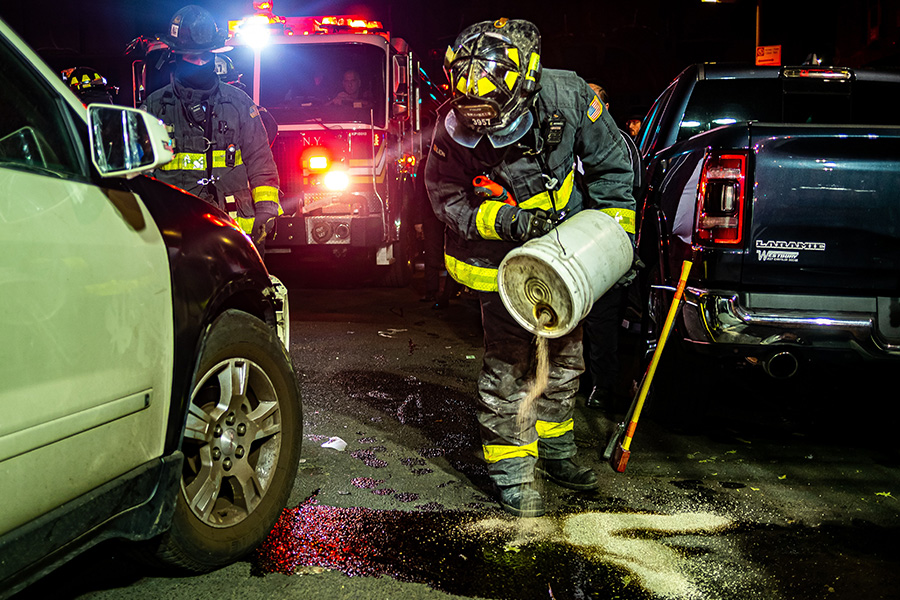
Premises Liability and Slip and Falls
Slip and fall cases fall under the umbrella of premises liability law because they typically go hand-in-hand. Of course, like in any situation such as a car accident, if you suffer harm in a slip and fall accident anywhere outside of your home, the property is most often owned or maintained by someone. Whether it’s a public place and the government is responsible or it’s a private location owned by a business or person, there are property owners present who must work to ensure there are no dangers present on the grounds that can cause you to suffer harm.
In order to file a premises liability lawsuit after a slip and fall on someone else’s property, not only do you have to keep the factors of liability in mind from above, you must fall under a categorization allowed to file this type of claim. You cannot be a trespasser as these individuals are on property without permission, meaning the property owner has no responsibility to keep them safe. However, there are two categorizations that allow you to file a claim following a slip and fall:
Licensee:
As a licensee, you’ve been invited over to someone’s home for a purpose other than business. For instance, a social host invites you over to their house for a party. There’s a broken handrail on the staircase leading to his or her backyard. As you put pressure on the handrail, it collapses, and you fall. This makes the homeowner liable for the damages you may sustain.
Invitee:
If you are an invitee, it means you are legally on someone’s property for a commercial reason. For instance, if you are a shopper in a store, you have a legal right to be there. It’s open to you for business. As such, the store owner must maintain the grounds to ensure there are no hazards that can cause you to slip and fall, including wet and slippery floors.

What is Involved in a Premises Liability Case?
While you may think that it’s easy to prove liability in a slip and fall case, these legal matters are often more complex than other cases because it’s necessary to show that the property owner was aware of the hazard. Beyond that, you’re still filing a claim against a large insurance company whose job it is to deny claims and protect their own profits instead of concerning themselves with the well-being of claimants. In premises liability cases, you’re going up against the provider of homeowner’s or business insurance depending on where the incident occurs.
In these matters, it’s vital to work with an injury attorney who knows the various tactics of the insurance company to take advantage of your rights during a difficult and vulnerable time. The insurance company is aware of your need for compensation at a time when you’re paying exorbitant medical bills and unable to earn income. They may offer you an unfair settlement that doesn’t even begin to cover your expenses simply because they feel you need the money to move forward. If you receive this settlement offer, you should speak with an attorney to determine the value of your case and if you can recover more.
In a premises liability case, you may be able to sue for economic and non-economic damages that cover a variety of expenses. Economic damages are all those with a value that can be determined by monetary loss. For instance, you can show the costs for medical and prescription bills, pay stubs to determine lost income, and any other monetary loss you experience. Non-economic damages include emotional distress, which can be difficult to navigate. How do you prove emotional distress? You must find ways to show that the injury you sustained as a result of the slip and fall have impacted your quality of life and the enjoyment you had prior to the injury.
FREQUENTLY ASKED SLIP AND FALL QUESTIONS
Can I sue for a slip and fall and can I sue someone if I fall on their property?
You can take legal action under premises liability law following an injury resulting from a slip, trip, and fall if the owner of the property knew of the damage and did not warn you of the hazard or fix it.
Are slip and fall cases hard to prove?
Slip and fall cases can be complex because they often involve proving the the property owner knew of the dangers that existed, yet they did nothing to protect people legally allowed on the property.
How much compensation do you get for a finger injury?
Similar to the above, finger injuries vary and usually depend on how the injury impacts your life. If you suffer a finger injury and it prevents you from working, you may be able to recover more.
How do you prove emotional distress?
Proving emotional distress can seem difficult, but if the injuries you sustain cause you pain and suffering, loss of enjoyment in life, and more, you may be able to pursue non-economic damages.
How long after a slip and fall can I sue?
In California, slip and fall cases must be filed within two years of the date at which the injury occurs.
What is the average settlement for a slip and fall knee and back injury?
Settlements involving knee and back injuries after a slip and fall are often dependent on the severity of the injury and the impact it has on your life. For instance, if you sit while working and you can still comfortably do so after the injury, you may not lose any income. This can impact the amount of your compensation.
Should I get a lawyer for a slip and fall?
A lawyer can be very helpful in proving that the property owner was negligent. Because you’re going up a large insurance company, it’s in your best interests to obtain legal representation.
How do you prove negligence in a slip and fall accident?
Proving negligence in a slip and fall starts with showing a duty of care. If the property owner has an obligation to keep you safe, but they fail in that duty, it starts you down the path to prove negligence.
HIRING A LOS ANGELES PERSONAL INJURY ATTORNEY
At Pirnia Law Group, we have significant experience managing cases involving slip and fall accidents. We know how to prove negligence and work to help you navigate matters involving the insurance company. We’re committed to helping you throughout the entire process, explaining your options, and providing you guidance so you know what to expect at each phase. We’ll help you file the necessary paperwork, prepare for discovery, determine if a settlement offer is right for you, and safeguard your rights through trial if that’s where your case goes.
Our injury lawyer is not afraid of big corporations, and we’re always willing to go the extra mile for you. Trust in our team to be your advocates and your voice to pursue justice and compensation after a slip and fall accident on someone else’s property. You deserve to be able to recover without having your best interests overlooked by a company more concerned with their bottom line than helping you in your time of need.
Call our firm today to schedule your free consultation with a legal professional. We offer our services on a contingency fee basis, so you pay nothing unless we win on your behalf. We’re ready to fight for you.



